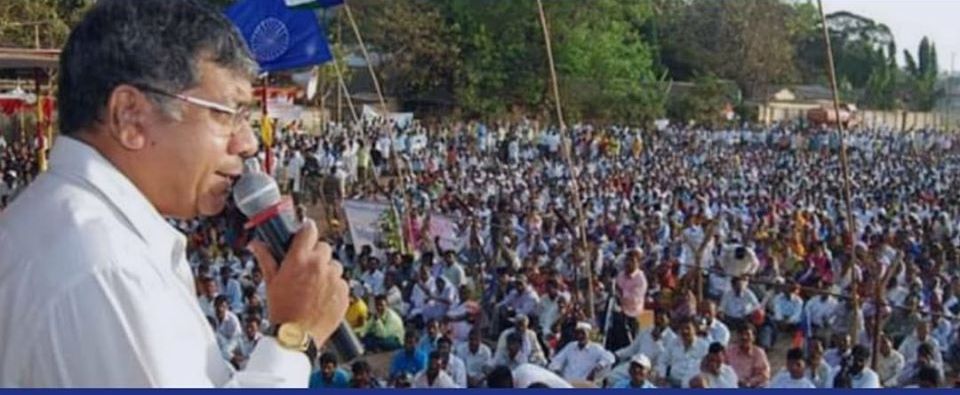Umar Nizar
 Muslims in India form a significant minority, numbering almost 140 million. These Muslim belong to various denomination including, Sufi, Salafi and Sunni and the Jama’at-e-Islami. The public sphere in India has been caste and class ridden in a way that MN Srinivas (1989) observes in his work on Sanskritization, where people belonging to the Hindu faith, attaining economic wealth try to move up the caste ladder by adopting the customs and practices of the upper castes. There is also a parallel ‘Arabization’ process prevalent among the Muslims of India.
Muslims in India form a significant minority, numbering almost 140 million. These Muslim belong to various denomination including, Sufi, Salafi and Sunni and the Jama’at-e-Islami. The public sphere in India has been caste and class ridden in a way that MN Srinivas (1989) observes in his work on Sanskritization, where people belonging to the Hindu faith, attaining economic wealth try to move up the caste ladder by adopting the customs and practices of the upper castes. There is also a parallel ‘Arabization’ process prevalent among the Muslims of India.
The ghettoisation of Muslims post the advent of ultra nationalist Hindutva has contributed to an ‘Islamic Exceptionalism’ in India. (This could also be framed as an ‘exclusion’ of muslims from the public sphere. In the battle of perceptions, what matters most is sovereignty. The ability to set one’s own agenda is often denied the subalterns.) I would like to inquire into the ways in which Indian Muslims engage with the digital public sphere, as they try to articulate a universal and not ghettoized position.
India is slowly emerging as a global power in the export of software and Information Technology Enabled Services (ITES). There have been attempts to equate this rise with abstract thought systems that render Indians better managers of intangible information systems. Often derogatorily called ‘cyber coolies’, the subaltern contributions to the digital revolution, both as its drivers and as its consumers have been systematically obliterated. The intangible digital technologies have been given precedence over embodied technologies of the subalterns by ascribing a virtual Brahminical quality to theoretical knowledge. The sanskritization of algorithms has expelled subaltern imaginaries from the virtual sphere altogether. (The valorization of figures like NR Narayanamurthy and the now disgraced former chief of Satyam Microsystems, Ramalingaraju is part and parcel of this attempted ‘modernization of tradition’. The religious philosophies of India, including advaitic monism (Sharma;1999), are said to have rendered abstraction relatively more palpable. The deities of India-Siva,Vishnu,Ganesh, Bajrang etc- are variously described as digital deities and entities.) A nascent digital public sphere which is conducive to majoritarian values is emerging. India has close to a billion mobile phone users. Nearly 400 million of whom are hooked to the internet and social media. The level of debates conducted in platforms such as Youtube (Menon;2002) has helped create a digital public sphere in India. Here, I strive to depict various strategies through which the Muslim society is participating in this highly evolved realm of digital media including blockchain, bitcoin economy and new media configuration of socio-economic relationships.
Indian Muslims, from 1921, when Gandhi organized an agitation against the British move to abolish the Caliphate, have felt themselves to be close to a global Muslim Ummah or community. Semitic illusions of being the ‘chosen people’ still prevail. Faisal Devji has observed that without deconstructing the structure of the Indian Muslim community itself, it would be impossible for it to join the mainstream. I would like to inquire into ways in which the community strives to join the digital public sphere in India and the wider globalized virtual ‘desert of the Real’.
Islamic Readymade
The Muslims of South Asia have from early modern times crafted embroidery and apparels that can be counted under the category called ‘readymade’ by the artist Marcel Duchamp. The Islamic readymade including ‘ikat’ and ‘tetris’ designs produce clothes including Hijab that are ready to be worn, in industries based in Hyderabad, Lucknow and Ahmedabad etc. This design eco-system also extends to neighbouring Bangladesh where multinationals have set up sweat shops. The gendered nature of these manufactured readymade often render them ‘haram’ or prohibited, in much the same way as fashions in hairstyle such as dreadlocks are often denounced as ‘haram’. The lack of religious assent seldom prevents the larger subconscious of society from joining the mainstream in its engagements. Various scriptural references might be cited in defence of doing so.
Readymade is already an Islamic concept as the Quran says ‘Kun-faya’. God only has to proclaim the ‘Kun’ sound and creation has been performed at his mere will. This is the pre-history and primordial antecedent of the Islamic readymade, through which the Indian Muslim strives to enter the pagan, multiverse of the digital public sphere in India.
In the next section I would like to study the electronic music of the composer AR Rahman. Rahman who won 2 Academy Awards in 2009 for his brilliant work for the Hollywood production, ‘Slumdog Millionaire’ (2008;Danny Boyle). Rahman who has been variously called ‘Mozart of Madras’ and the ‘Beethoven of Bombay’ is a convert to Islam. His family came under the influence of the Sufi, Sadaqatullah Qadri. His music is electronic and revolutionary as the Theremin and the Moog Mini were in Europe and is hence an ideal site to study the formal structure and inclination of the community. His readymade compositions, often called cynical, have topped the Bollywood charts for years. The Sufi mystical compositions, Qawwalis, are digitally synthesised with codified hand clapping patterns that fall within the purview of the digital. These have been proliferated not only through Youtube and iTunes, but also on locally developed indigenous android apps such as ‘Shazm’ and ‘Saregama’.
The quest for the Muslim readymade moves into the realm of food, where food delivery apps for Kebabs and Biriyani by eateries such as ‘Al-Kauser’,’Zishan’s’,’Karim’s’ ,’Qureshi’s’, and ‘Mughul Durbar’. These food delivery apps for Kebabs and Biriyani have created a network of spice merchants, grocers and retailers that flows into the construction of an Islamic readymade centered on non-vegetarian food.
The tacky nature of the digital and the fluidity of the majoritarian faith in its various manifestations challenges the Muslim social formation that still operates on a Shari’a based analog manipulation of scriptural edicts. This segues into debates such as those on the triple talaq. Meanwhile the very medium of debate is altering and Islamic societies with antennae deep into a pre-modern past are seldom part of this game-changing arena of digital technology and its public sphere. With their primordial analog sensibilities Muslim societies are grappling with illusionary monsters while struggling to participate in the wider debates around this issue.
While even mainstream Indian universities still struggle with the concepts of world rankings, digital humanities and the accelarationist digital technologies and the resultant information explosion, Islamic seminaries remain in a bubble of theological contestation and nitpicking. The most pathetic and appalling of the manifestations of the digital in India is in the form of the extremism. Using the fatwas of Imams from the middle east, Yusaf-al-Qardawi, young men in the past have blown themselves up using digital devices in what can be seen as desperate attempts to join the public sphere and the inability to do so.
~~~
Umar Nizar is a research scholar in JNU.










